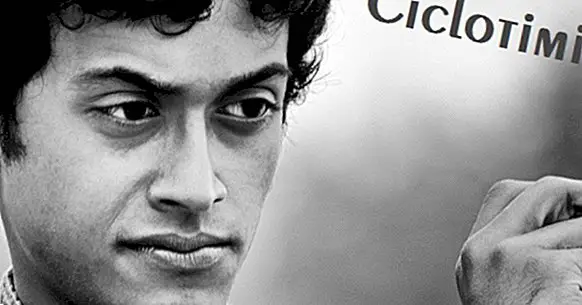Cyclothymia: the mild version of Bipolar Disorder
The Cyclothimia (or cyclothymic disorder) is a mood disorder similar to Bipolar Disorder, and is characterized by mild phases of depression and hypomania.
Adults are diagnosed with this condition after persisting symptoms for at least two years. In children and adolescents, it is diagnosed if symptoms occur for at least one year.
Characteristics of Cyclothymia
Cyclothymia is characterized by a persistent instability of mood . That is, the person suffering from this disorder shows periods of mild depression and euphoria. In general, it usually appears in adulthood and follows a chronic course. Although it is usual for several months, the person suffering from cyclothymia shows a normal mood.
The cyclothymic does not realize its mood swings, because they are relatively mild. In addition, euphoric periods They are usually perceived as pleasant and, therefore, it is common for them not to seek psychological help.
30% of people with cyclothymic disorder may end up suffering from type I or type II bipolar disorder. Frequently, cyclothymia progresses to type II and less frequently, to type I. The prevalence of cyclothymia is between 0.4 and 1% of cases and affects both men and women equally.
What is hypomania?
The hypomania It is a mild mania. The hypomania phase presented by the cyclothymic is characterized by a high mood, euphoria, excitement and hyperactivity . During the state of hypomania, the cyclothymic subject has less need to sleep and rest, and is full of energy. Although the symptoms of hypomania are milder than those of mania, they are also very destructive, causing conflicts and ruptures in love relationships and friendships, affect work, cause financial difficulties, etc.
Symptoms of Cyclothimia
The person with cyclothymia shows ups and downs in their mood. Next, we present the characteristic symptoms of the phases of depression and hypomania.
Symptoms of hypomania
- Mild euphoria
- Agitation
- Excessive physical activity
- Risk behaviors
- Endless energy
- Verb
- Desire and impulse for success
- Self-esteem or high grandiosity
- Acceleration of thought
- Attention deficit
- An exaggerated feeling of happiness or well-being and extreme optimism
- Lack of judgment
- Aggressive or hostile behavior
- Excessive expenses
- Increase in sexual activity
- Less need to sleep
Symptoms of mild depression
- Sadness feelings
- Melancholia
- Anxiety
- Feelings of guilt
- Fatigue and lack of motivation
- Lack of appetite or excessive intake
- Loss of interest in activities that were previously considered pleasant
- Decreased sexual desire
- Concentration problems
- Irritability
Treatment of cyclothymia
Cyclothymia causes many problems for the person suffering from this disorder. So, it is necessary to seek psychological help as soon as possible , because cyclothymia usually does not improve on its own and can evolve into a more severe form of bipolar disorder.
Psychotherapy in the intervention on cyclothimia
In case you know someone with cyclothymia, it is necessary to speak openly and honestly with them. Despite not being able to force an individual to go to therapy, it is possible to give support and help in difficult times.
The psychological therapy It is indicated to stabilize daily habits and seek maximum possible regularity in the patient's life.
Finally, people who live daily with the cyclothymic, can also benefit from psychotherapy to better take the situation, because coexistence with an individual who suffers from this disorder can be complex.
Pharmacological treatment of cyclothymia
In addition, pharmacological treatment is also usual to treat cyclothymia and alleviate its symptoms and signs in the short term. Among the types of psychotropic drugs most used in this form of intervention based on a more psychiatric perspective, the drugs that have been shown to be most useful are mood stabilizers and drugs for falling asleep (in low doses).
In the case of combining the pharmacological intervention in the treatment of cyclothymia with the psychotherapeutic approach, it is good that in the latter it is not only the way to manage the way in which the disorder is experienced, but also how the patient can adapt to the use and effects of psychotropic drugs.



















